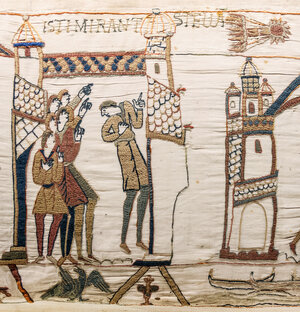Giotto’s comet results
The most striking results from Giotto were the images from the Halley Multicolour Camera. These revealed that the comet had a single nucleus with an elongated ‘potato’ shape, being about 15 km long and 9 km across, and was larger than previously anticipated.
The fact that scientists could determine the comet’s albedo directly for the first time led to the discovery that only 2-4% of the incident light was reflected, which means that comets are among the darkest objects in the Solar System.
Two major bright ‘jets’ emanated from the sunward side of the nucleus and it appeared – and this was one of the big surprises – that only a relatively small fraction of the nucleus was active. Combined with other observations, it was possible to establish that the nucleus had a fairly low density, at less than 0.6 grams per cubic cm.

Giotto’s Neutral and Ion Mass Spectrometer provided a wealth of data on the composition of the comet’s molecular structure, including detailed information about the abundances of the various species as a function of distance from the nucleus.
From the analysis of the dust spectra, scientists learned that most of the dust particles were rich in hydrogen, carbon, nitrogen and oxygen, with minerals and most probably organic components present, which is characteristic overall of a very complex chemistry.
The first dust-particle impact on the Giotto spacecraft was recorded by the Dust Impact Dectection System when still 290 000 km from the comet’s nucleus, which was much further away than predicted by the dust models. More than 12 000 dust-particle impacts were recorded during the fly-by.
The interaction between the solar wind and the comet’s ionosphere can be characterised by two distinct boundaries, the bow shock and the contact surface, and several additional sharp transition regions, which indicate a multi-layered interaction region. The Giotto data are textbook examples for these interaction regions.
The spacecraft crossed the bow-shock region when 1.15 million km from the nucleus, and crossed the contact surface when 4700 km away. Inside this region, the magnetic field dropped essentially to zero, as had been theoretically predicted and had been expected by analogy with Venus and the ‘artificial’ comet of the AMPTE mission.
These first results from the encounters with Comet Halley were published in the scientific journal Nature.
For more information:
Gerhard Schwehm, ESA Rosetta Project Scientist
E-mail: gerhard.schwehm @ esa.int















 Germany
Germany
 Austria
Austria
 Belgium
Belgium
 Denmark
Denmark
 Spain
Spain
 Estonia
Estonia
 Finland
Finland
 France
France
 Greece
Greece
 Hungary
Hungary
 Ireland
Ireland
 Italy
Italy
 Luxembourg
Luxembourg
 Norway
Norway
 The Netherlands
The Netherlands
 Poland
Poland
 Portugal
Portugal
 Czechia
Czechia
 Romania
Romania
 United Kingdom
United Kingdom
 Slovenia
Slovenia
 Sweden
Sweden
 Switzerland
Switzerland





































